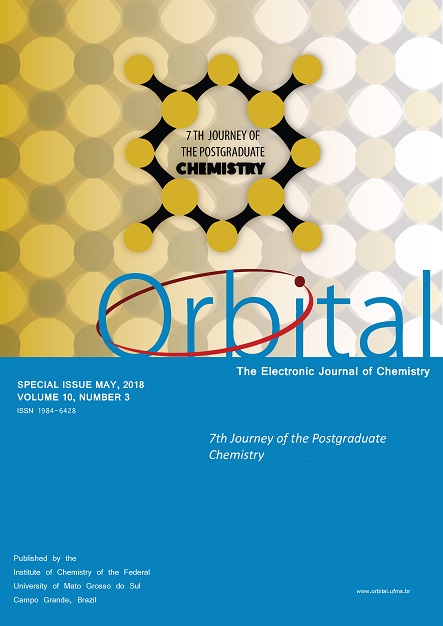Influence of the Calcination Temperature on the Colorimetric Properties of Co, Fe and Ni Aluminates in Solid State Reactions Aided by Citrus Pectin
- aluminate,
- CIELAB (CIE L*a*b*),
- color
Copyright (c) 2018 Orbital: The Electronic Journal of Chemistry

This work is licensed under a Creative Commons Attribution-NonCommercial-NoDerivatives 4.0 International License.
Abstract
In the present study, the syntheses of white and colored pigments based on aluminum, citrus pectin, and different coloring ions were performed by using the solid mixture method whit three different calcination temperatures (600 °C, 800 °C, and 1000 °C). The obtained pigments were characterized by colorimetry (CIELAB) and by absorbance and diffuse reflectance spectroscopy (VIS-NIR). All pigments presented different colorations and/or tonalities with increases in the calcination temperature as show in the calculation of the total color difference that indicated differences between all groups of pigments. The increase in the calcination temperature also influenced the values of the colorimetric coordinates and increased the values of the coordinate L* that are related to the percentage of pigment reflectance. This is because higher values of luminosity were obtained for pigments with higher reflectance. Absorbance spectra evidenced the presence of Co2+ and Ni2+ ions in tetrahedral sites when higher calcination temperatures were applied while Fe3+ ions only occupied the octahedral interstices at higher applied temperatures. Generally, Al(pec) and Fe-Al(pec) pigments exhibited higher color stability with increases in the calcination temperature.


